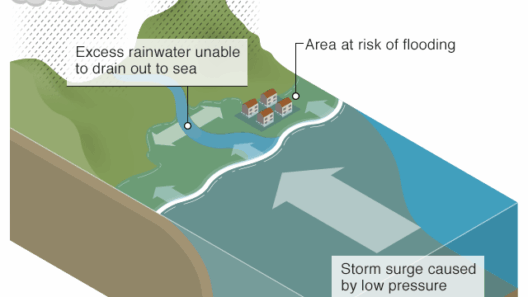In recent years, the phenomenon of climate protests has garnered unprecedented attention and participation around the globe. Central to this surge in activism is Greta Thunberg, a name synonymous with climate advocacy. But the question arises: Did Greta Thunberg genuinely cause global warming protests? To answer this inquiry, it is essential to dissect the dynamics of her influence, the contextual backdrop of climate awareness, and the myriad factors that contribute to mass mobilization in the fight against climate change.
First, it is critical to understand the socio-political landscape leading up to Thunberg’s emergence as a climate activist. The late 20th century and the early 21st century were characterized by an increasing body of scientific evidence linking human activity to climate change. However, awareness among the general populace was sporadic at best. Various grassroots organizations had long campaigned for environmental awareness, but their struggles often remained overshadowed by economic and political priorities that favored short-term gains over long-term sustainability.
Thunberg’s first act of defiance began with her solitary protest outside the Swedish parliament in August 2018. With a simple placard reading, “Skolstrejk för klimatet” (School Strike for Climate), she sought to emphasize the urgency of climate action while drawing attention to a critical issue that many had previously overlooked. This small act burgeoned rapidly, capturing public imagination and serving as a catalyst for a wider movement. The simplicity and sincerity of her message resonated with many, particularly the youth, who felt a disproportionate burden from the impending consequences of climate change.
The meteoric rise of social media played an indispensable role in amplifying Thunberg’s impact. Platforms like Twitter, Instagram, and Facebook facilitated the rapid dissemination of her message, creating an online community that shared her commitment to environmental activism. This virtual network transcended geographical boundaries, uniting individuals from diverse backgrounds under a common cause for climate justice. Thunberg’s speeches at various international forums, including the United Nations Climate Action Summit, further propelled her narrative into the international spotlight. Her impassioned addresses, often characterized by unyielding rhetoric, evoked raw emotion and challenged political leaders to take immediate action against climate degradation.
However, the narrative of Thunberg as the sole architect of the global climate protest movement is overly simplistic. Though she undoubtedly acts as a figurehead and unifying force, a multitude of grassroots organizations and activist groups were already hard at work before her protests gained traction. Movements like Fridays for Future, Extinction Rebellion, and various youth-led organizations were already active, pushing for systemic change long before Thunberg’s arrival on the scene. Thunberg’s potent message acted as a linchpin, connecting disparate initiatives and fortifying momentum for broader action. Her presence and voice galvanized existing efforts, leading to an unprecedented level of participation in climate protests.
The widespread participation in protests, particularly among young people, highlights an intergenerational divide regarding climate action. Many young activists view Thunberg as a beacon of hope, someone who articulates their fears and hopes for the planet’s future. This affinity is significant; young people have historically been underrepresented in political processes that affect their futures. As such, Thunberg’s advocacy helps bridge that gap, fostering a unique cross-generational dialogue focused on sustainability and the ethical implications of climate inaction.
Global climate protests have molded into a collective expression of discontent toward established institutions that have failed to adequately confront the reality of climate change. The demonstrations provide a platform for participants to articulate their demands, such as transitioning to renewable energy, enforcing stricter regulations on CO2 emissions, and prioritizing environmental protection in legislative agendas. In this way, Thunberg serves not merely as a spokesperson but also as a symbol of a burgeoning movement that seeks to hold leaders accountable for their inaction.
Furthermore, Thunberg’s advocacy has sparked a critical reassessment of societal values regarding climate change. The narrative has shifted from viewing environmental issues as peripheral to recognizing them as paramount. Dialogue around climate change is no longer limited to scientists and environmentalists; it includes economists, social justice advocates, and political leaders. This cross-disciplinary approach enriches the discourse and ignites a sense of collective responsibility towards creating sustainable solutions that address both ecological and socio-economic disparities.
As we dissect the intricate tapestry of the global climate movement, it becomes evident that Thunberg’s involvement catalyzed a significant shift in public consciousness and prompted collective action. Yet, it is crucial to remember that she is one piece of a larger puzzle. The unprecedented scale of global warming protests cannot be attributed solely to a single individual. Rather, it represents a confluence of ongoing efforts, collective frustration, and heightened urgency regarding climate issues. The future of these protests may hinge on the transformative ability of young activists to influence policy, drive innovation, and sustain public interest over the long term.
Ultimately, while Greta Thunberg’s role in popularizing global warming protests is undeniable, attributing the entire movement to her alone simplifies a complex and multifaceted phenomenon. Her contributions offer both inspiration and impetus but are grounded in a broader context of activism that predated her involvement. The collective echoes of voices demanding urgent action signal not just a moment, but a significant societal paradigm shift towards environmental stewardship that transcends generations.







